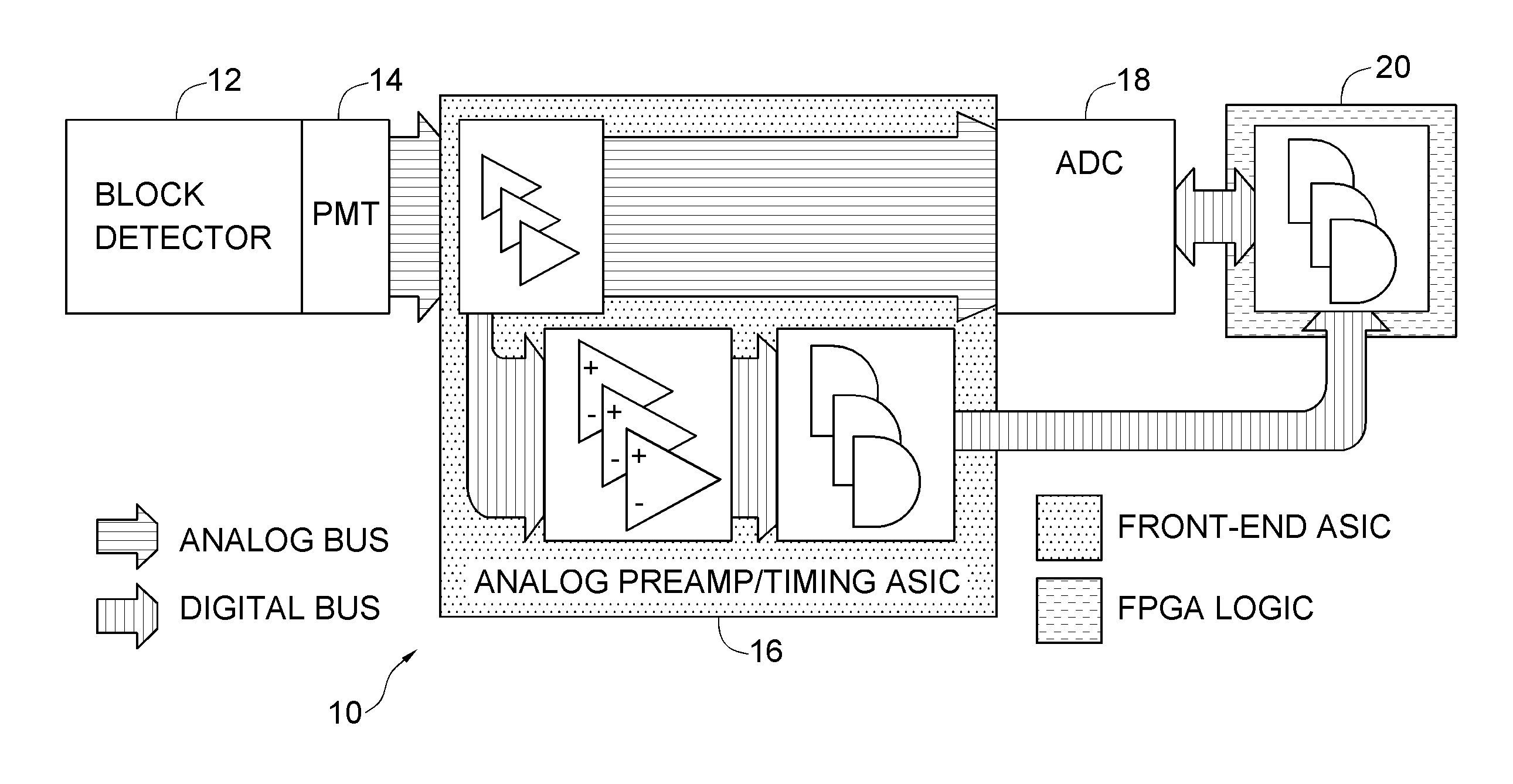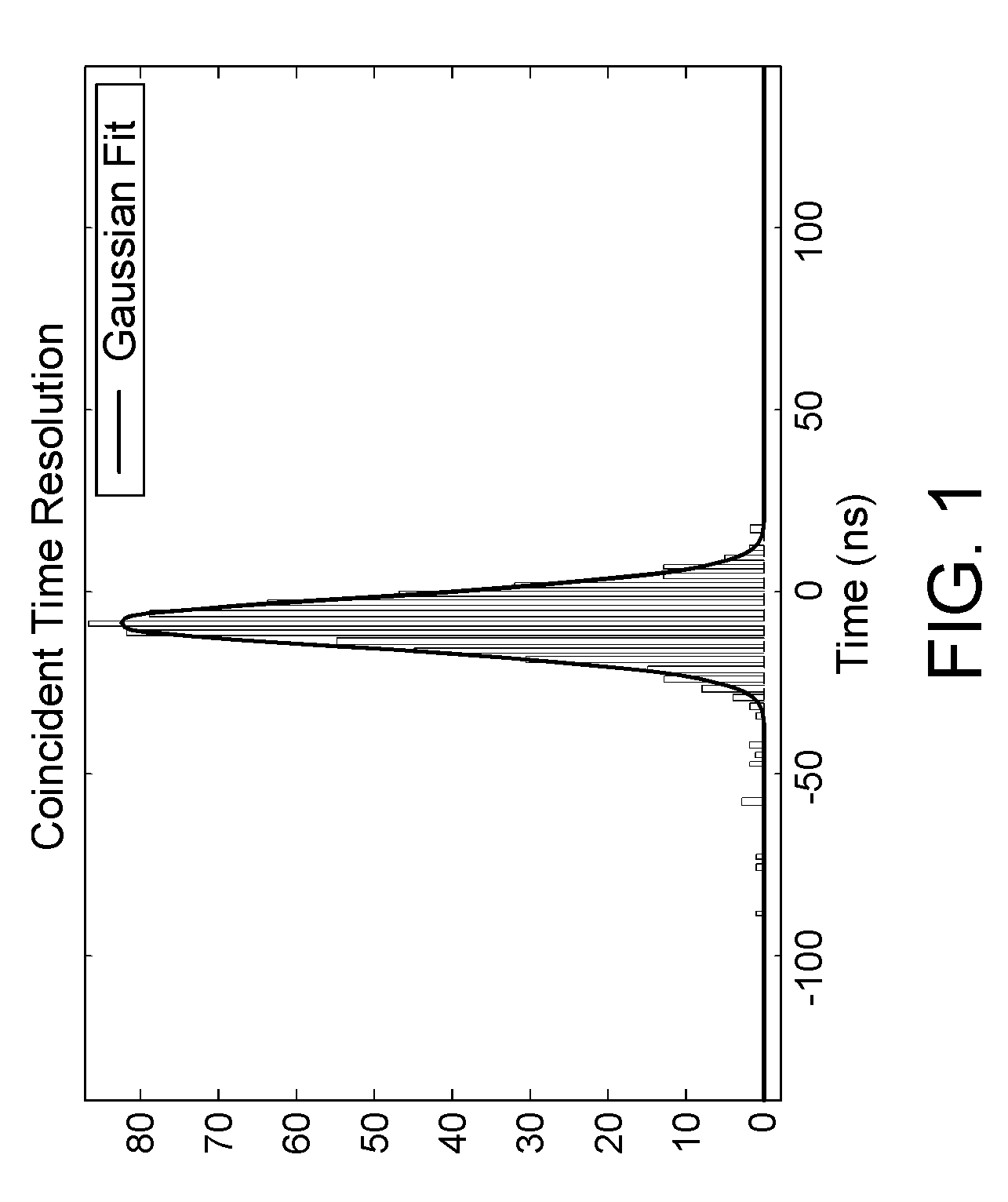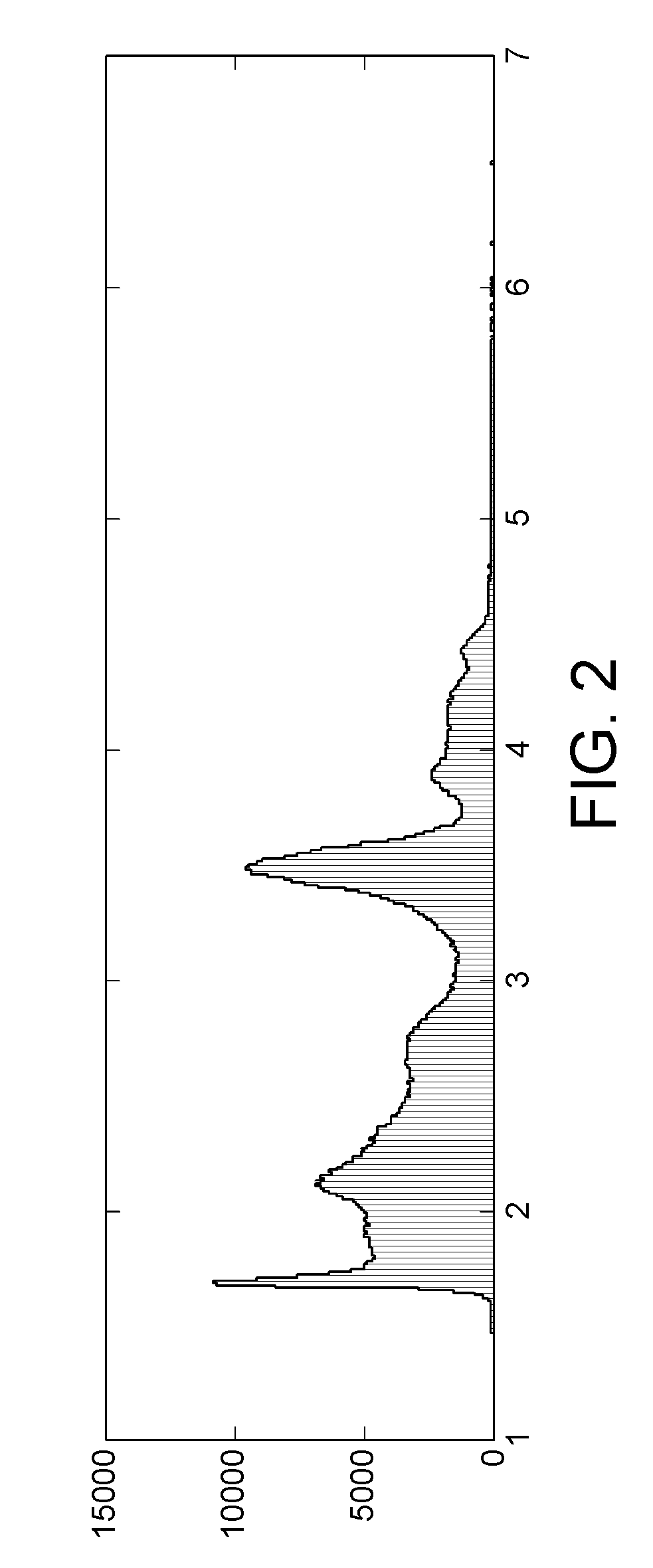High energy photon detection using pulse width modulation
a high-energy photon and pulse width technology, applied in the field of imaging, can solve problems such as the problem of deteriorating signal quality and the problem of analog signals being sent for processing
- Summary
- Abstract
- Description
- Claims
- Application Information
AI Technical Summary
Benefits of technology
Problems solved by technology
Method used
Image
Examples
Embodiment Construction
[0025]As described above, in standard high energy photon detectors, for an event such as a scintillation event, information from individual interactions is recorded, such as the time of the event, the energy of the event, and the location of the event. These parameters are determined through certain analog signal processing algorithms applied to the analog signals that the detector generates. For example, the energy and location information may be processed using an analog-to-digital (ADC) converter that samples an analog value that is proportional to the integral of the charge created by the scintillation event.
[0026]However, more recent, very high resolution high energy photon detection systems require new data acquisition architectures to accommodate the large increase in the number of readout channels. For example, FIG. 4 shows light multiplexing being used to reduce the number of readout channels in a conventional PET block detector readout system 10. In FIG. 4, a block detecto...
PUM
 Login to View More
Login to View More Abstract
Description
Claims
Application Information
 Login to View More
Login to View More - R&D
- Intellectual Property
- Life Sciences
- Materials
- Tech Scout
- Unparalleled Data Quality
- Higher Quality Content
- 60% Fewer Hallucinations
Browse by: Latest US Patents, China's latest patents, Technical Efficacy Thesaurus, Application Domain, Technology Topic, Popular Technical Reports.
© 2025 PatSnap. All rights reserved.Legal|Privacy policy|Modern Slavery Act Transparency Statement|Sitemap|About US| Contact US: help@patsnap.com



